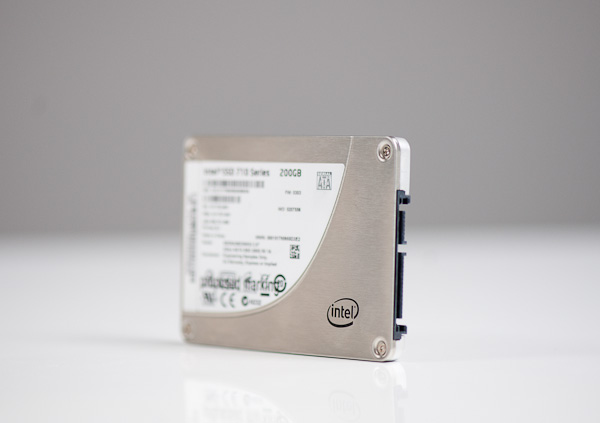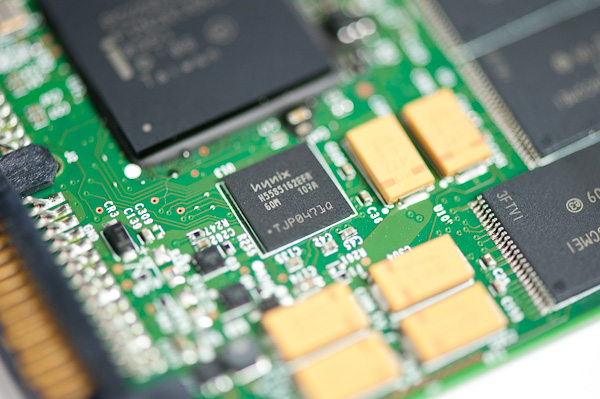The Intel SSD 710 (200GB) Review
by Anand Lal Shimpi on September 30, 2011 8:53 PM EST- Posted in
- Storage
- SSDs
- Intel
- Intel SSD 710
Final Words
When I first ran through the performance data of the 710 I came away disappointed. As a desktop user the 710 offers lower performance than the Intel SSD 320 at a significantly higher price. Thankfully, Intel's focus for this drive is on the enterprise market and here the 710 does a lot better. Our SQL tests showed the 710 offering similar performance to the outgoing X25-E. It was in our Oracle OLTP benchmark that the older SLC drive was able to offer a 25% increase in throughput over the new MLC-HET solution. No matter how you look at it, small file random write performance is just tough to beat on SLC NAND. I suspect for many enterprise workloads however, the 710 could be a drop-in replacement for the X25-E. In the cases where it isn't as fast, the margins are significant but overcomable by upping the number of drives in the RAID array. This isn't the ideal solution but the cost savings alone (compared to the X25-E) should make the move to the 710 worth it. If you don't need additional capacity however and are running a write intensive OLTP workload, the 710 will likely do nothing for you.
Intel's SSD 710 appears to be targeted squarely at existing X25-E customers or companies who needed the endurance of the X25-E but at larger capacities. In fact we have a number of X25-Es deployed in our servers that I wouldn't mind moving to 710s simply because of the capacity increase. Most of our servers don't need a ton of space, but with DB sizes in the hundreds of GBs even a large array of 64GB drives doesn't give you all that much space for growth (especially if you're replicating data across SSDs for redundancy). For these uses, the 710 appears to be a success.
The big question for enterprise customers is whether or not you need the additional cycling offered by the 710. To know for sure you'll really have to do a lot of profiling of your own workload. I suspect Intel's SSD 320 would do just fine in a number of situations, particularly if you significantly increase the spare area on the drive (e.g. to 50%).
Where the 710 leaves me wanting more is that it doesn't actually move the performance bar up at all. At best Intel is able to deliver the same performance it did nearly three years ago with the X25-E. While it is true that customers moving from spindles to SSDs will likely be just fine with the 710's level of performance, I would like to see more. To date Intel hasn't delivered a 6Gbps SATA SSD based on its own controller. I suspect that's a big part of why we're not seeing better performance out of the 710. Intel is likely unwilling to try a third party controller in the enterprise space (can't blame them) so instead we get the 710: a decent performer with Intel's reputation for reliability. Should SandForce be able to convince customers that its solutions are just as reliable however, Intel could have a real problem in the enterprise space.












68 Comments
View All Comments
AnnonymousCoward - Sunday, October 2, 2011 - link
Use a CD; that's mechanical storage.Flash is definitely a poor choice, since charge is slowly lost. I'm not sure about magnetic hard drives.
ggathagan - Monday, October 3, 2011 - link
If you use optical media, better have it a manufactured ROM disk, as opposed to writable media.Even the best consumer optical media is only good for around 10 years.
James5mith - Monday, October 3, 2011 - link
One thing intel and the rest of the SSD crowd by far have failed to address is the limitations of SATA for enterprise workloads. Doesn't matter how fast your drive is, on a SATA interface it will tank in truly heavy mixed I/O environments. Native SAS SSD's are needed to move the hdd form factor SSD's forward in the industry.That being said, in my research for an in-house project, I discovered Smart Modular. Their Optimus SAS SSD's are up to 1.6TB/drive, and at that capacity are still below $3/GB.
To be fair, I have not gotten any of them in house to test yet, so I can't say how well they will do. But knowing the difference moving from SATA to SAS drives make in an array, I would have to imagine it will be significant when I do.
Not to mention, from a pure density standpoint, 1.6TB 2.5" SSDs can pack more density per rack unit than 3TB 3.5" drives. Once you get to the 4TB 3.5" drives, the crown returns to slow spinning media though.
jhh - Monday, October 3, 2011 - link
A conventional HDD wouldn't fare much better. The typical service life of an enterprise HDD is 5 years after a storage period of no more than 6 months. Beyond that point, the MTBF numbers aren't valid. That doesn't mean the drive will immediately fail. But, conventional HDDs aren't meant to be stored for a long period of time. The lubricating medium (grease or oil) will start moving away from where it is supposed to be, so that parts which were supposed to be lubricated won't be lubricated. The lubricant may also start oxidizing, becoming less of a lubricant. I'm not sure that a drive sitting around for 5 years will be any worse than a drive which was operating for 5 years, but I wouldn't count on either to be around for 20 years, let alone 50.If you want to be sure those baby pictures will still be around to show their grandkids, best to print the pictures, as we have never developed a better archival storage device. Better yet, paint it in some obscure cave in France. If you want the time capsule information to be available, print it on archival paper with archival inks.
rikmorgan - Tuesday, October 11, 2011 - link
I see an article in EE Times saying Samsung is producing flash NAND on their new 20nm FAB now and expects to begin running it at 10nm next year. Just passing it on, don't know how newsworthy it is. ET Times 10/10/2011 edition.Linkpl4y - Saturday, October 15, 2011 - link
Well you've made it this far. Hopefully you've learned something on the way.Here's the next path on your journey. http://bit.ly/nqPUwd
Iketh - Monday, October 17, 2011 - link
LOLmayaw - Saturday, November 5, 2011 - link
Because I do video graphics and its really the only thing that slows my system down for any type of reference # on tests. Even with a 10,000 RPM drive I have 12gb of mem and I upgrade my processor every 3-4 years when I can but I really never think of the hard drive. But now I am seriously thinking about getting one of these.Oh and by the way guys I think that the collar of his shirt is stretched out because his head is so big and it has to stretch itself out cause of the big brain he has in it unlike ppl who are arguing about someone that is wearing a t-shirt on a hard drive review.